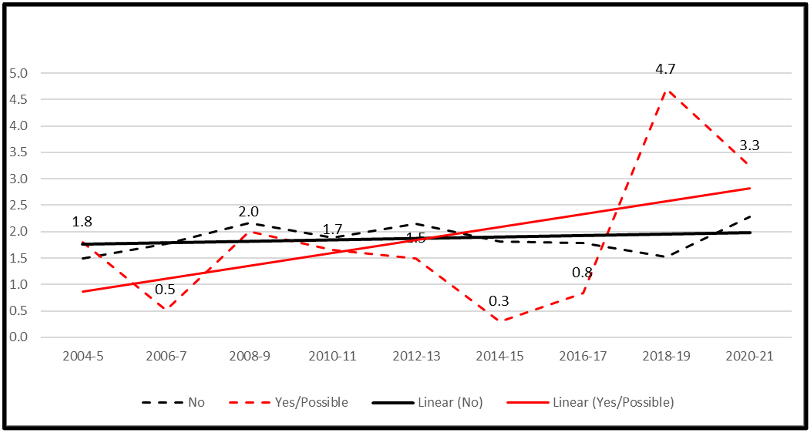- 408-924-7560
- mineta-institute@sjsu.edu
- Donate
News Advisory: Evolving Patterns of Violence in Developing Countries
When horrific terrorist attacks occur in economically advanced countries such as those in North America and Europe, they are widely reported and remembered – and the fear remains.
However, new research by the Mineta Transportation Institute shows that attacks in less economically advanced countries are far more frequent and bloodier. The resulting report, Evolving Patterns of Violence in Developing Countries, shows that some of the attacks that have occurred were quite sophisticated – and the most lethal were carried out by jihadist groups.
Focusing on what they designate as Group 2 countries, those with developing economies and not members of the OECD, the findings show that they had seven times the number of attacks, and three times greater lethality compared to economically advanced Group 1 countries with OECD membership.
Using the MTI database of Terrorist and Serious Criminal Attacks Against Public Surface Transportation, the authors, Brian Michael Jenkins and Bruce Butterworth looked at attacks against passenger trains and train stations, buses and bus stations and stops, and all rail infrastructure and operating and security personnel in both sets of countries between January 1, 2004, and December 31, 2022.
They cite as examples the 2006 jihadist bombings on commuter trains leaving Mumbai, killing 189 and injuring at least 800; the 2010 train derailment by Maoist insurgents in West Bengal, killing 48 and injuring 800 and the 2014 car bomb by jihadists at a bus station in Nigeria, killing 71 and injuring 24.
Many Group 2 countries have long-running insurgencies that produce frequent and lethal attacks. There are far more attacks on buses and bus depots and stops in Group 2, reflecting greater reliance on bus travel. Explosives dominate attack methods, and while jihadist attackers are responsible for only 9.7% of attacks, they create 33.7% of fatalities. Jihadists are, they note, the most lethal attackers in both Group 1 and Group 2 countries. Suicide attacks account for only about 3% of the attacks in both groups, but while that percentage has gone down in Group 1, it has gone up in Group 2.
India, Pakistan and Iraq account for half of the attacks in Group 2 countries, although levels of violence in India and Pakistan have declined slightly in recent years. Levels in sub-Saharan Africa have increased, owing to the activities of jihadist groups in the Sahel. Levels in Thailand have also increased, owing to separatist activity in the southern part of the country.
The report is intended as a companion report to the August 2022 MTI report on violence in economically advanced countries, Changing Patterns of Violence Pose New Challenges to Public Surface Transportation in the United States.
Jenkins explained: “We hope that by analysing and comparing what has been going on in advanced and non-economically advanced countries, governments and transportation professionals will be able to use the data to help understand the overall picture and rethink their current security and staff training strategies.”
Evolving Patterns of Violence in Developing Countries can be downloaded here.
Changing Patterns of Violence Pose New Challenges to Public Surface Transportation in the United States 2022 can be read here.
Graph:
While the percentage of suicide attacks in Group 2 countries is only 3% and not increasing, suicide attacks have become more lethal than non-suicide attacks measured in Fatalities Per Attack.

NOTES FOR EDITORS:
For Editors: Both key authors are available for interviews – please contact Bruce Butterworth at brbutterworth@gmail.com + 1 (301) 767-6853
ABOUT THE AUTHORS
Brian Michael Jenkins is the Director of the Mineta Transportation Institute’s Allied Telesis National Transportation Security Center and since 1997 has directed the Institute’s continuing research on protecting surface transportation against terrorism and other serious forms of crime.
Bruce R. Butterworth is a Senior Transportation Security Researcher at MTI and former Director of Aviation Security Operations at the Federal Aviation Administration. Bruce has taken a leading role in creating MTI’s unique database of attacks on public surface transportation.
Sachi Yagyu contributed to this report. She is a Transportation Security Specialist at MTI, and previously served as a Research Librarian and Library Research Services Team Lead at the RAND Corporation. She holds an MLS Degree from UCLA.
ABOUT THE MINETA TRANSPORTATION INSTITUTE
At the Mineta Transportation Institute (MTI) at San Jose State University (SJSU) our mission is to increase mobility for all by improving the safety, efficiency, accessibility, and convenience of our nations’ transportation system. Through research, education, workforce development and technology transfer, we help create a connected world. Founded in 1991, MTI is a university transportation center funded by the US Departments of Transportation, the California Department of Transportation, and public and private grants, including those made available by the Road Repair and Accountability Act of 2017 (SB1). MTI is affiliated with SJSU’s Lucas College and Graduate School of Business.
-
Events
Media Coverage
| CalBike Report 12/23/2025: The Last Mile of 2025 - Mineta E-Bike Study Published |
| Scofflaw Manufacturers Could Be The Downfall of E-bikes |
| How EVs and Transit are Rewriting the Affordability Map for Homebuyers |
Contact Us
San José State University One Washington Square, San Jose, CA 95192 Phone: 408-924-7560 Email: mineta-institute@sjsu.edu





